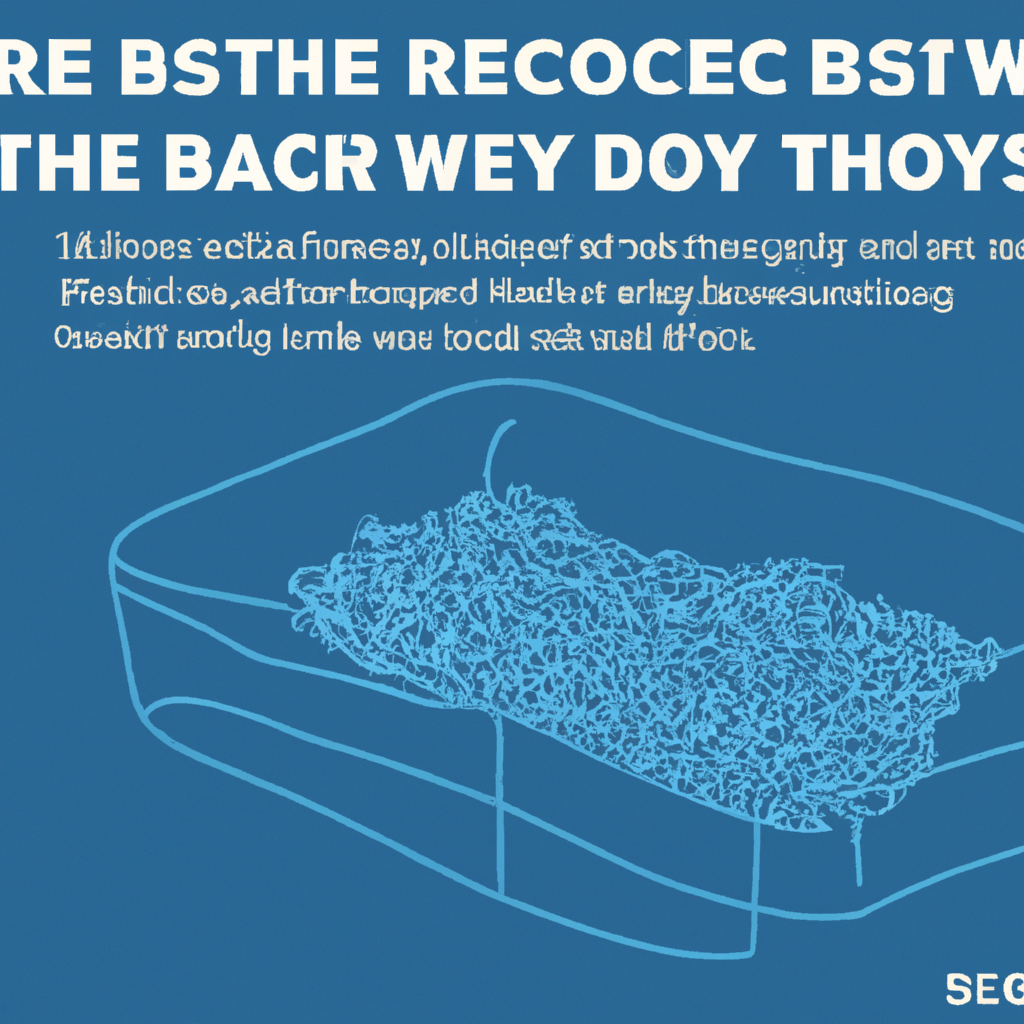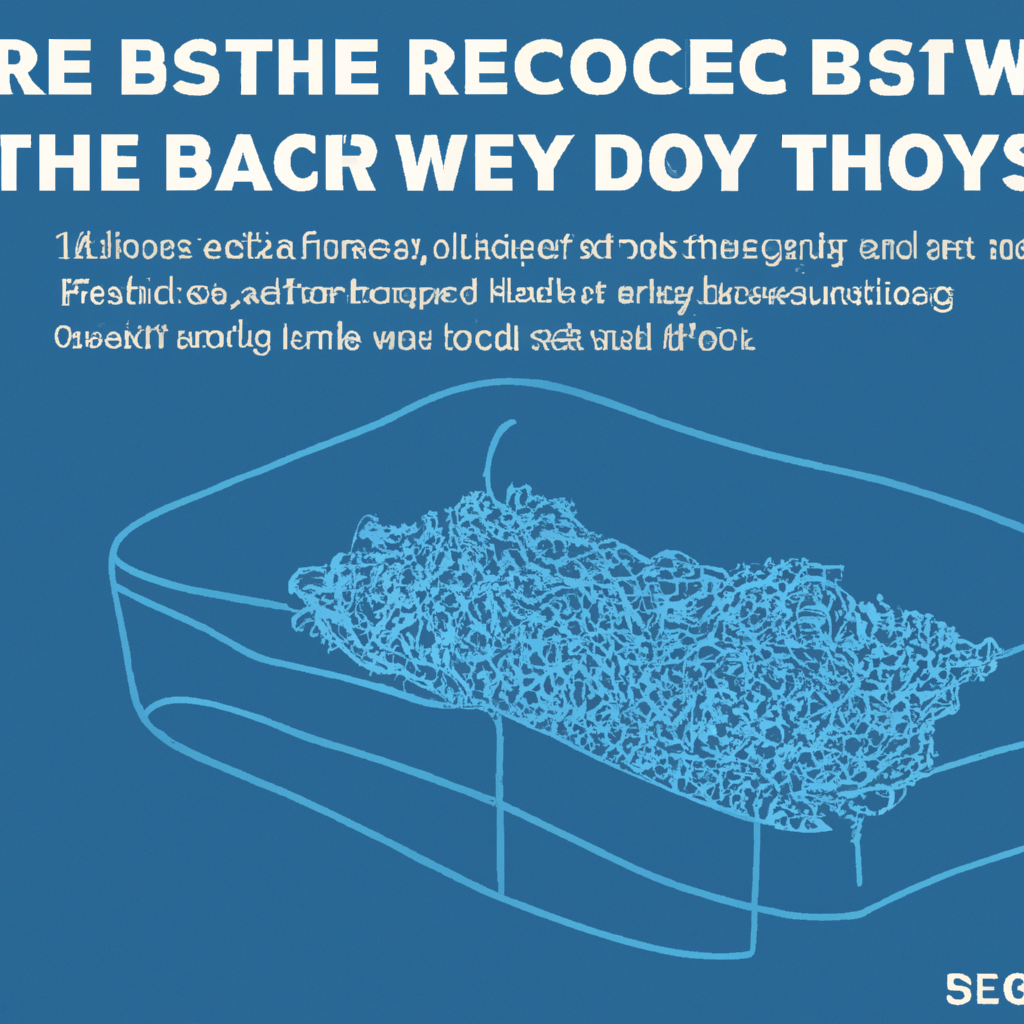Tired muscles after a rigorous workout? Look no further than ice baths to revolutionize your recovery! In this article, we’ll explore the captivating science behind the transformative power of ice baths. From reducing inflammation to speeding up muscle repair, learn how this age-old technique is making a comeback in the fitness world. Discover the intriguing benefits and find out how you can incorporate ice baths into your recovery routine. Get ready to take your post-workout rejuvenation to a whole new level!

This image is property of images.pexels.com.
What are Ice Baths?
Ice baths, also known as cold water immersion therapy, are a popular technique used in sports recovery to enhance recovery and reduce muscle soreness. This therapeutic practice involves immersing the body in ice-cold water for a specific duration. While ice baths are commonly associated with athletes and sports enthusiasts, they have gained recognition in other areas, such as physical therapy and general wellness. So, how did this chilled therapy become such an integral part of recovery? Let’s delve into the definition and history of ice baths to gain a better understanding.
The definition of Ice Baths
Ice baths are a form of cold therapy that involves immersing your body in ice-cold water, typically kept between 50 and 59 degrees Fahrenheit (10 to 15 degrees Celsius), for a certain duration. This technique triggers various physiological responses in the body, leading to enhanced recovery and reduced muscle soreness. The cold temperature of the water stimulates vasoconstriction, a process in which the blood vessels narrow, reducing blood flow to the muscles. This, in turn, helps reduce inflammation, minimize tissue damage, and assist in recovery.
The history of Ice Baths
The use of ice baths can be traced back to ancient civilizations, where cold water bathing was considered beneficial for physical and mental well-being. In ancient Rome, for example, public baths were equipped with cold water rooms, allowing people to experience the rejuvenating effects of cold water. Similarly, in traditional Chinese medicine, cold water immersion was employed for its therapeutic benefits. However, it was not until the 20th century that ice baths gained widespread recognition in the field of sports recovery. Athletes started experimenting with cold water therapy to reduce muscle soreness and enhance recovery, leading to its incorporation into mainstream sports training and rehabilitation practices.
How Ice Baths are commonly used in sports recovery
Ice baths have become a staple in sports recovery programs due to their ability to aid in the repair and regeneration of muscles, reduce inflammation, and alleviate muscle soreness. Athletes, from professional footballers to marathon runners, have integrated ice baths into their post-workout routines to expedite recovery and maximize performance. By exposing their bodies to cold water immersion, athletes can kickstart various physiological responses that enhance muscle recovery, reduce oxidative stress, and promote overall well-being. Let’s explore the benefits of ice baths in detail.
Benefits of Ice Baths
Reduced inflammation and swelling
One of the key benefits of ice baths is their ability to reduce inflammation and swelling. When exposed to cold water, the blood vessels constrict, reducing blood flow to the muscles and surrounding tissues. This constriction helps minimize the buildup of inflammatory substances, thus reducing swelling and inflammation. By reducing inflammation, ice baths contribute to faster healing, enhanced recovery, and decreased pain.
Enhanced muscle recovery
Ice baths are highly regarded for their effectiveness in enhancing muscle recovery. The cold temperature of the water helps reduce muscle damage and inflammation, enabling the muscles to recover more quickly. Additionally, ice baths promote vasoconstriction, which assists in flushing out metabolic waste products, such as lactic acid, from the muscles. This clearance of metabolic waste helps improve muscle function and accelerates the recovery process.
Pain relief and reduced muscle soreness
Ice baths are prized for their analgesic properties, providing pain relief and reducing muscle soreness. Cold therapy dampens nerve activity, reducing the perception of pain and promoting comfort. By alleviating muscle soreness, ice baths provide athletes and individuals with an opportunity to recover quicker and resume their training or daily activities.
Improved circulation and tissue healing
The cold temperature of ice baths promotes vasoconstriction, leading to a temporary reduction in blood flow to the muscles. However, once the body is removed from the cold environment, vasoconstriction is followed by vasodilation – the widening of blood vessels. This process enables increased blood flow to the muscles and tissues, facilitating their repair and promoting healing. Improved circulation also supports oxygen delivery, which is crucial for tissue recovery.
Stress reduction and improved mental well-being
Beyond the physical benefits, ice baths offer psychological advantages as well. The practice of immersing oneself in ice-cold water can induce a sense of relaxation, calmness, and mental clarity. The shock of cold triggers the release of endorphins, natural mood-enhancing chemicals in the brain, which can alleviate stress and boost overall well-being. The mental fortitude gained from overcoming the discomfort of ice baths can also contribute to increased mental toughness and resilience, qualities that are invaluable in both sports and daily life.

This image is property of images.pexels.com.
The Science Behind Ice Baths
To fully appreciate the benefits of ice baths, it is crucial to understand the underlying physiological mechanisms at play. The science behind ice baths revolves around the effects of cold on the body, including vasoconstriction, decreased metabolic activity, reduction in tissue edema, and activation of the body’s natural healing processes.
Effect of cold on the body
When exposed to cold temperatures, the body initiates a series of physiological responses to maintain its core temperature and protect vital organs. These responses include vasoconstriction, increased shivering, and decreased metabolic activity. Understanding these responses is essential to grasp how ice baths impact the body’s recovery process.
Vasoconstriction and its benefits
One of the primary physiological responses triggered by cold exposure is vasoconstriction, the narrowing of blood vessels. Vasoconstriction helps reduce blood flow to the muscles and surrounding tissues, limiting inflammation and swelling. This constriction also aids in minimizing tissue damage and promoting overall recovery.
Decreased metabolic activity and energy conservation
Cold exposure leads to a decrease in metabolic activity, allowing the body to conserve energy. This reduction in metabolic activity influences the rate at which muscles produce waste products, such as lactic acid, and supports the removal of these substances from the muscles. By limiting the accumulation of metabolic waste, ice baths facilitate improved muscle recovery and function.
Reduction in tissue edema and inflammation
Inflammation and tissue edema are common after intense exercise or injury. Cold exposure from ice baths helps reduce tissue edema by constricting blood vessels and limiting the inflammatory response. This reduction in swelling contributes to faster healing and recovery.
Activation of the body’s natural healing processes
Ice baths not only minimize inflammation and swelling but also activate the body’s natural healing processes. Cold exposure stimulates the release of anti-inflammatory substances and growth factors, promoting tissue repair and regeneration. These healing processes are essential for restoring muscle function and reducing recovery time.
The Physiological Responses to Ice Baths
Ice baths elicit various physiological responses in the body, which play a crucial role in the recovery and adaptation processes. These responses include changes in core and skin temperature, heart rate, blood pressure, blood flow, hormonal responses, and effects on the immune system.
Reduction in core and skin temperature
When submerged in an ice bath, the body’s core and skin temperature decrease. The chilling sensation activates the body’s thermoregulatory system, causing the body to constrict blood vessels and divert blood from the skin to the vital organs. This response helps preserve core body temperature and protects vital organs from the extreme cold.
Changes in heart rate and blood pressure
Cold water immersion induces changes in heart rate and blood pressure. Initially, the heart rate may increase due to the body’s stress response. However, as vasoconstriction occurs, the heart rate tends to normalize or decrease. Blood pressure may elevate momentarily during the cold exposure, but it usually returns to baseline or slightly lower as the body adapts.
Impact on blood flow and oxygen delivery
The constriction of blood vessels during ice baths reduces blood flow to the muscles and tissues. However, once the body is removed from the cold environment, blood flow increases due to vasodilation. This increased blood flow supports improved oxygen delivery to the muscles and accelerates the removal of waste products, promoting overall recovery.
Influence on hormonal responses
Cold water immersion triggers hormonal responses in the body, including the release of endorphins, adrenaline, and noradrenaline. Endorphins help alleviate pain and induce a sense of well-being, while adrenaline and noradrenaline contribute to increased arousal, mental alertness, and readiness for physical activity.
Effects on the immune system
The immune system is also influenced by ice baths. Cold exposure prompts changes in the immune response, including the release of anti-inflammatory substances and increased activity of immune cells. This enhanced immune response aids in tissue repair and supports overall recovery.

This image is property of images.pexels.com.
Optimal Temperature and Duration
Determining the ideal temperature range and duration for ice baths is essential to balance effectiveness and safety. While there is no universally agreed-upon optimal temperature or duration, several factors need to be considered, including the individual’s tolerance, recovery goals, and any potential contraindications.
Determining the ideal temperature range
The ideal temperature range for ice baths typically ranges between 50 and 59 degrees Fahrenheit (10 to 15 degrees Celsius). However, there is some variability, as individual tolerance and desired outcomes play a role in determining the optimal temperature. It is crucial to find a temperature that provides the desired therapeutic effect without causing discomfort or potential harm.
Balancing effectiveness and safety
When considering the duration of ice baths, it is essential to strike a balance between effectiveness and safety. While longer durations may provide more benefits, prolonged exposure to cold can increase the risk of tissue damage and adverse effects. Generally, ice baths are recommended to be between 10 to 15 minutes to maximize benefits while minimizing risks.
Factors influencing duration of ice baths
The duration of ice baths can vary depending on various individual factors. The intensity of the exercise, the individual’s fitness level, and the specific recovery goals all influence the optimal duration of ice baths. It is essential to consult a healthcare professional or a sports therapist to determine the appropriate duration based on individual needs and circumstances.
Individual variability in temperature tolerance
Each individual has a unique tolerance to cold temperatures. Factors such as body fat percentage, circulation, and acclimation to cold can influence an individual’s ability to tolerate cold water immersion. It is crucial to pay attention to personal comfort and adjust the temperature and duration of ice baths accordingly.
Maximizing the Benefits
While ice baths alone can yield numerous benefits, combining them with other recovery strategies can enhance their effectiveness. Several approaches can be employed to maximize the benefits of ice baths, including the sequential application of hot and cold therapies and incorporating contrast therapy.
Combining ice baths with other recovery strategies
Ice baths can be complemented by other recovery strategies to amplify their effects. These strategies may include stretching, foam rolling, massage, compression therapy, and electrical stimulation. When combined strategically, these techniques can enhance recovery and optimize performance.
Sequential application of hot and cold therapies
The sequential application of hot and cold therapies, also known as contrast therapy, involves alternating between cold and warm temperatures. This approach capitalizes on the beneficial effects of both hot and cold exposure. Contrast therapy is believed to promote vasodilation and vasoconstriction, improving blood flow and optimizing recovery.
Incorporating contrast therapy for enhanced recovery
Contrast therapy can be incorporated by switching between ice baths and warm baths or showers. By immersing oneself in an ice bath for a specific duration, followed by a warm bath or shower, the body experiences alternating constriction and dilation of blood vessels. This contrast facilitates enhanced blood flow, reduced muscle soreness, and improved recovery.

Considerations and Precautions
While ice baths can offer significant benefits, it is crucial to exercise caution and consider certain precautions to ensure their safe and effective application. Adequate supervision and proper guidance are essential, especially for individuals with specific medical conditions or susceptibility to cold-related injuries.
Contraindications and potential risks
Ice baths are not suitable for everyone, and certain contraindications must be considered. Individuals with Raynaud’s disease, cardiovascular conditions, or compromised circulation should avoid ice baths or seek medical advice before attempting them. Moreover, prolonged exposure to extreme cold can lead to frostbite, skin damage, or hypothermia. Awareness of these risks and contraindications is crucial in maintaining safety during ice bath therapy.
Monitoring skin condition during ice baths
Regular monitoring of skin condition during ice baths is essential to prevent potential skin damage or complications. Extreme cold can cause vasoconstriction and reduce blood flow to the extremities, potentially affecting skin integrity. Individuals undergoing ice bath therapy should pay close attention to their skin’s response and seek immediate medical attention if any signs of frostbite, numbness, or unusual coloration occur.
Ensuring proper supervision and guidance
Ice baths should never be performed without proper supervision and guidance, especially for individuals who are new to this therapy. A trained professional, such as a sports therapist or healthcare provider, can guide individuals through the process, ensuring appropriate temperature levels, duration, and safety protocols.
Avoiding prolonged exposure to extreme cold
To mitigate the risks associated with ice baths, it is crucial to avoid prolonged exposure to extreme cold. Longer durations may increase the risk of adverse effects, such as tissue damage or hypothermia. It is recommended to adhere to the suggested duration and consult a healthcare professional if intending to exceed those recommendations.
Ice Baths vs. Cryotherapy
Cryotherapy, often confused with ice baths, is a separate therapeutic approach that utilizes extreme cold to stimulate the body’s healing responses. While both ice baths and cryotherapy involve exposure to cold temperatures, they differ in terms of application, temperature range, and method of cold delivery.
Understanding the difference between ice baths and cryotherapy
Ice baths involve immersing the entire body or specific body parts in cold water, typically maintained at a temperature of 50 to 59 degrees Fahrenheit (10 to 15 degrees Celsius). On the other hand, cryotherapy utilizes extreme cold, often in the form of nitrogen gas or refrigerated air, to expose the body or specific body parts to temperatures as low as -240 degrees Fahrenheit (-150 degrees Celsius). Cryotherapy sessions are usually shorter in duration than ice baths, typically lasting only a few minutes.
Comparing the benefits and limitations of each approach
Both ice baths and cryotherapy offer various benefits and limitations. Ice baths are more accessible and affordable, as they can be performed at home using a bathtub or an immersion tank. They also allow for the immersion of the entire body, facilitating a more comprehensive recovery experience. Cryotherapy, on the other hand, provides extreme cold exposure in a short amount of time, making it a convenient option for those with time constraints. However, cryotherapy requires specialized equipment and facilities, leading to higher costs. The choice between ice baths and cryotherapy often depends on personal preferences, availability, and individual recovery goals.
Choosing the most suitable option for specific needs
When deciding between ice baths and cryotherapy, it is essential to consider individual needs, preferences, and resources. Factors such as accessibility, affordability, convenience, and desired therapeutic effects should be taken into account. Consulting a healthcare professional or a sports therapist can help determine the most suitable option based on specific circumstances and recovery goals.

Practical Tips for Ice Bath Therapy
To make the most of ice bath therapy, it is beneficial to be aware of practical tips and best practices. By following these guidelines, individuals can optimize their ice bath experience and ensure a safe and effective recovery process.
Preparing the ice bath
When preparing an ice bath, it is advisable to fill a bathtub or immersion tank with cold water and add ice cubes or ice packs to achieve the desired temperature. It is essential to measure the temperature using a thermometer to ensure it falls within the recommended range. Adding Epsom salt to the water can provide additional benefits, such as muscle relaxation and alleviation of muscle soreness.
Entering and immersing in the ice bath
Before entering the ice bath, it is important to ensure the surrounding environment is warm and comfortable. This can help minimize any discomfort experienced during the initial plunge into the cold water. It is also recommended to wear swimwear or lightweight clothing to help maintain core body temperature. Once in the ice bath, it is advisable to slowly and gradually immerse the body, starting with the lower extremities and gradually progressing to the upper body.
Techniques to manage the discomfort of cold
Managing the discomfort of the cold during an ice bath requires mental focus and relaxation techniques. Deep breathing exercises, meditation, or focusing on positive imagery can help distract from the cold sensation. Engaging in light movements or gently stretching within the ice bath can also help divert attention and facilitate blood flow. It is important to listen to your body and discontinue the ice bath if experiencing excessive discomfort or adverse reactions.
Exiting and post-ice bath procedures
When exiting the ice bath, it is crucial to move gradually and avoid sudden changes in body temperature. A gradual exit from the cold water helps the body accommodate the temperature change and minimize any potential adverse effects. After the ice bath, individuals may consider a warm shower or the application of heat packs to help warm up gradually and restore core body temperature. Gentle stretching and light exercise can be beneficial in promoting blood flow and muscle recovery post-ice bath.
Incorporating ice baths into a routine
To maximize the benefits of ice baths, incorporating them into a recovery routine is essential. Ice baths can be utilized post-workout, after intense physical activity, or in specific intervals according to individual needs. Regularity and consistency of ice bath usage contribute to optimal recovery and adaptation. It is vital to listen to the body’s signals and adjust the frequency and duration of ice baths based on individual recovery requirements.
Conclusion
Ice baths have revolutionized the field of sports recovery, providing athletes and individuals with a valuable tool to enhance their recovery process. With a long-standing history and proven physiological benefits, ice baths have become an integral part of training programs and rehabilitative practices. From reducing inflammation and swelling to promoting muscle recovery and alleviating muscle soreness, ice baths offer a multitude of advantages. By understanding the science behind ice baths, individuals can grasp the physiological responses and maximize the benefits of this therapeutic technique. With proper precautions, supervision, and considerations, ice baths can be a safe and effective tool to expedite recovery, improve performance, and promote overall well-being. As research in the field of ice bath therapy continues to advance, the potential for individualized application based on specific needs holds promise for the future. So, take the plunge and experience the rejuvenating effects of ice baths for yourself!
